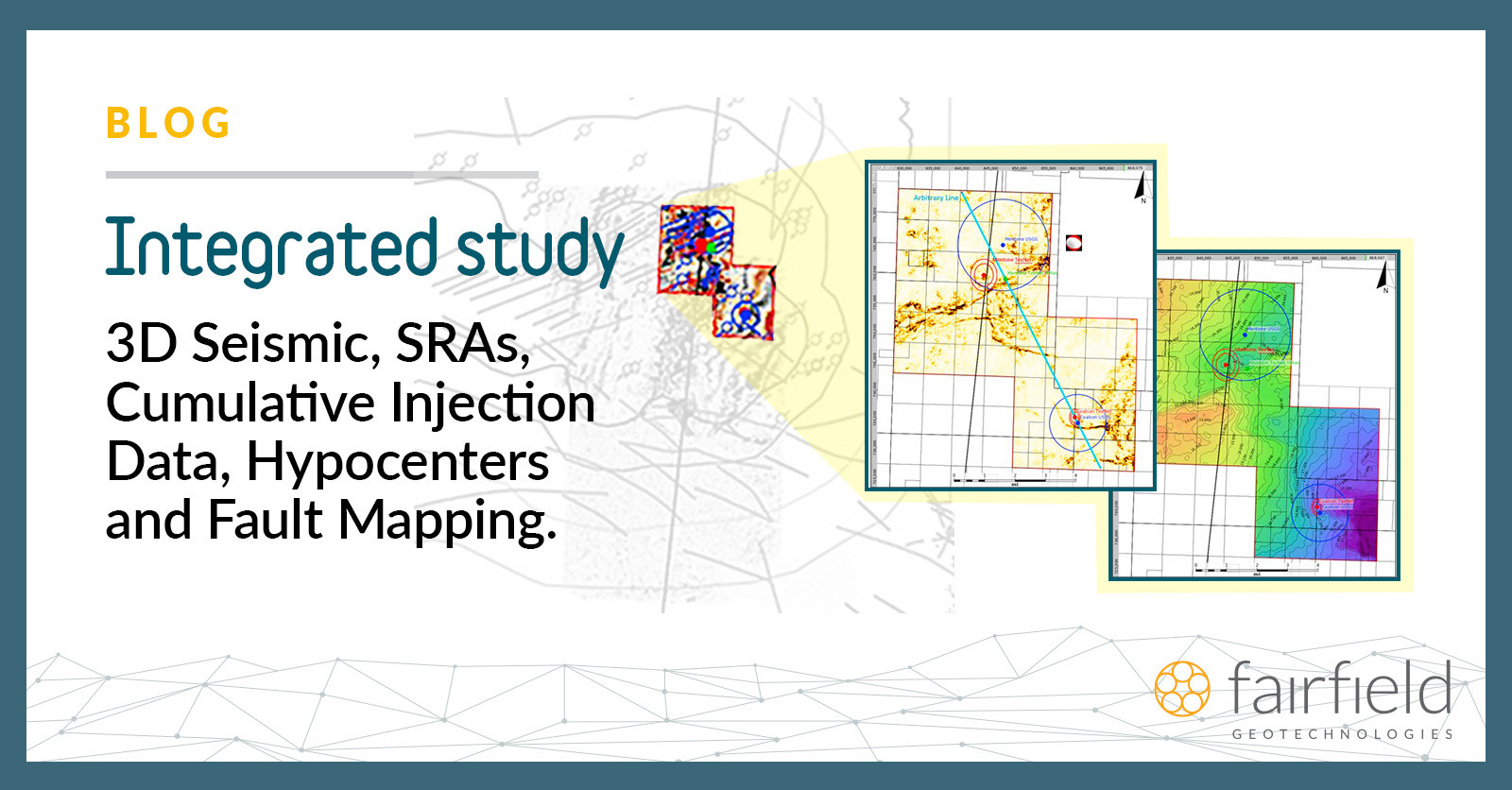Integrating 3D Seismic and Salt-Water Disposal Data into the Interpretation of Mentone and Coalson Hypocenters in the Northern Culberson – Reeves Seismic Response Area, Delaware Basin, Texas

The intensity and frequency of high-Richter magnitude Permian Basin earthquakes have dramatically increased in recent years, posing potential hazards and stirring up public interest. This has necessitated comprehensive studies to demystify the underlying causes and the processes involved.
The primary focus of the present study is on two significant Permian Basin earthquakes: the Mentone (4.9M) on March 26, 2020, and the Coalson (5.4M) on November 16, 2022, both key examples of increasing seismicity in the Permian Basin. The objective is to obtain a comprehensive and integrated view of injection activities within the seismic response area (SRA) and the complex fault systems that surround these earthquake hypocenters.
Methodology: Bridging 3D Seismic Data With Salt-Water Disposal Wells
The strategy employed to conduct this study integrates a variety of data sources, presenting a multifaceted approach to understanding the geological dynamics at play. The methodology weaves together 3D seismic data, hypocenters from the TexNet and USGS earthquake catalogs, and cumulative injection information for salt-water disposal (SWD) wells within the Northern Culberson-Reeves SRA.
The 3D seismic data employed in the study was acquired in 2011, covering 45 square miles over the Mentone and Coalson hypocenters. Specific bin size and fold specifications were adhered to during the acquisition process. The seismic data's multidimensional nature provides a volumetric image of the subsurface, enhancing the understanding of geological structures and their associated seismic activities related to Permian Basin earthquakes.
To further enhance the data analysis, hypocenters extracted from the TexNet and USGS earthquake catalogs were meticulously mapped onto the 3D seismic data. These hypocenters were represented in three dimensions, X, Y, and Z, to capture the spatial intricacies of the seismic activities. The study acknowledges and takes into account the uncertainties associated with these hypocenters during the mapping process.
Role of SWD Wells and Basement-Rooted Faults
Salt-water disposal (SWD) wells within the Northern Culberson-Reeves SRA were identified and their cumulative injection volumes were recorded. This data was extracted from a commercially available water data platform, aiding in the correlation of injection activities with seismic responses. Owing to the lack of well logs penetrating the basement, a pseudo-basement horizon was determined based on the deepest and most continuous reflector observable in the 3D seismic data.
This study utilized an incoherency cube to generate a stratal slice, a technique that helps highlight basement-rooted faults that penetrate the deeper strata. The Mentone and Coalson earthquake hypocenters were overlaid on this stratal slice, offering an insight into the potentially associated faults. Additionally, maps depicting cumulative injection volumes for deep and shallow SWD wells were created to scrutinize the relationships between SWD injections, fluid migration pathways, and basement-rooted fault systems.
Findings: Decoding the Complexities of Fault Lines and Seismic Activities
The study found that the hypocenters of the Mentone and Coalson earthquakes align with the complex basement-rooted thrust fault geometries identified in the 3D seismic data. The depth estimates of these hypocenters, as calculated by the USGS and TexNet, propose that these faults have been reactivated as normal faults, leading to the prevalent seismic activity in the area.
One significant finding was that the faults in the region dip northwards. The deep SWD wells in the Northern Culberson-Reeves SRA inject water due north from the Mentone and Coalson hypocenters, potentially influencing the seismic activities in the area. However, it's important to note that the 3D earthquake seismic data used in this study doesn't extend to cover the full extent of the deep salt water disposal wells situated further north in the Permian Basin.
Salt-Water Disposal Wells in the Permian Basin and Their Impacts
It was observed that shallow SWD wells are more evenly distributed in the area compared to the deep SWD wells. However, these shallow wells are at considerably shallower depths (around 5,000 feet) compared to the depths of earthquake hypocenters (over 20,000 feet). The study suggests that waste-water injection from these shallow SWD wells is unlikely to reach the basement unless there is a connectivity or presence of through-going faults linking the basement to the Delaware Mountain Group.
Furthermore, a retrospective analysis of the past five years shows that, compared to the shallow SWD wells, the deep SWD wells have injected a notably larger cumulative volume of water into the subsurface. This observation underlines the potential impact of deep SWD wells on the seismic activities in the region.
The Unique Value Proposition of the Study
This study is a pioneering effort that integrates 3D seismic data interpretation, injection information from SWD wells, and information related to the Mentone and Coalson earthquake hypocenters. The study aims to shed light on the complex spatial and temporal aspects of induced seismicity within the Northern Culberson-Reeves SRA.
While the 3D seismic data uncovers a network of thrust faults rooted in the basement, the depth information of the hypocenters, combined with the SWD well data, helps create a detailed picture of seismic activity. Although uncertainties exist in pinpointing the exact faults responsible, interpreting these faults helps identify potential fluid migration pathways. This insight can significantly contribute to reducing uncertainty in determining causal factors in induced seismicity.
Author
Andrew Lewis